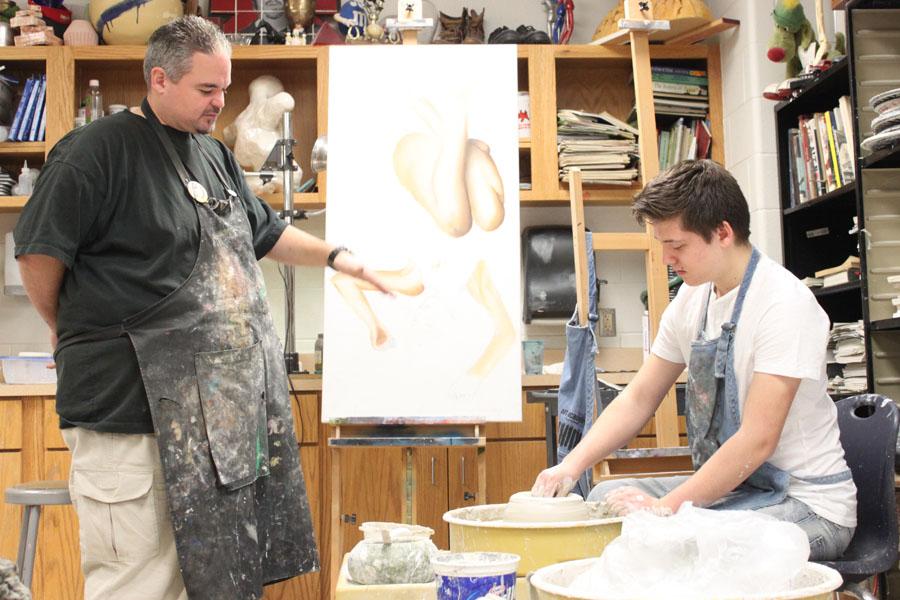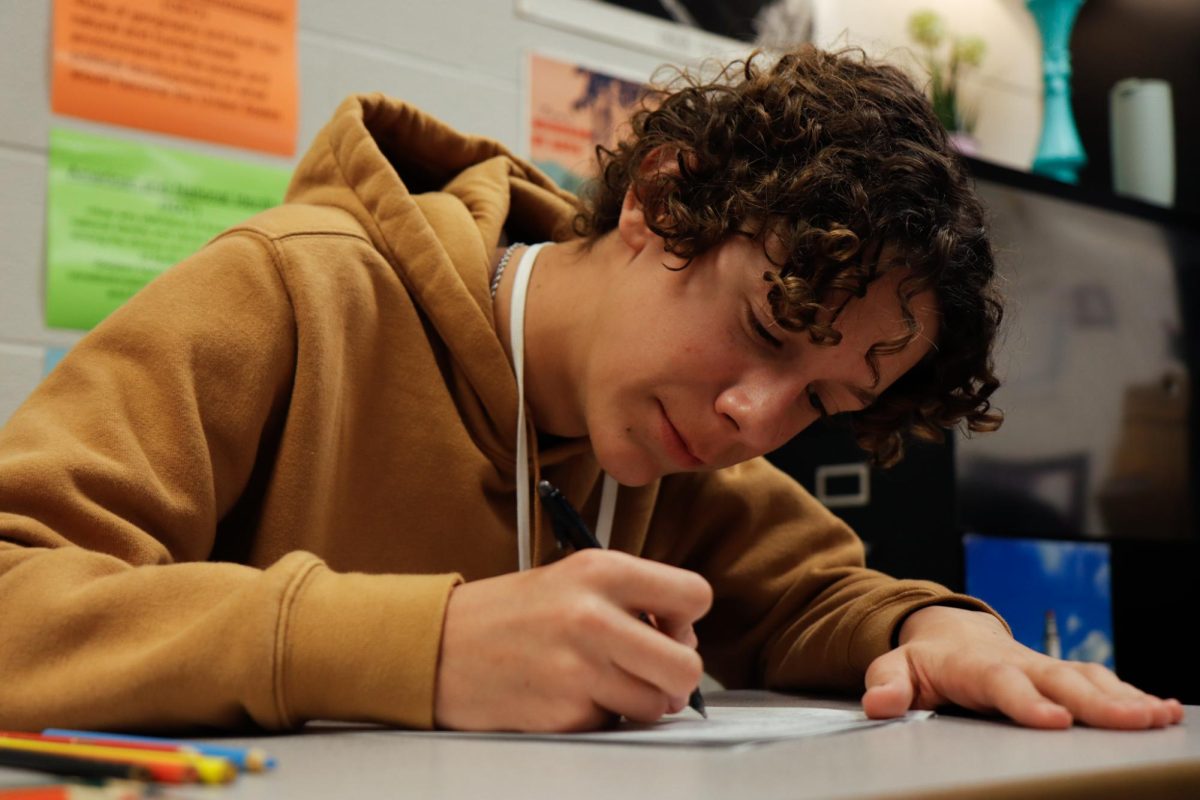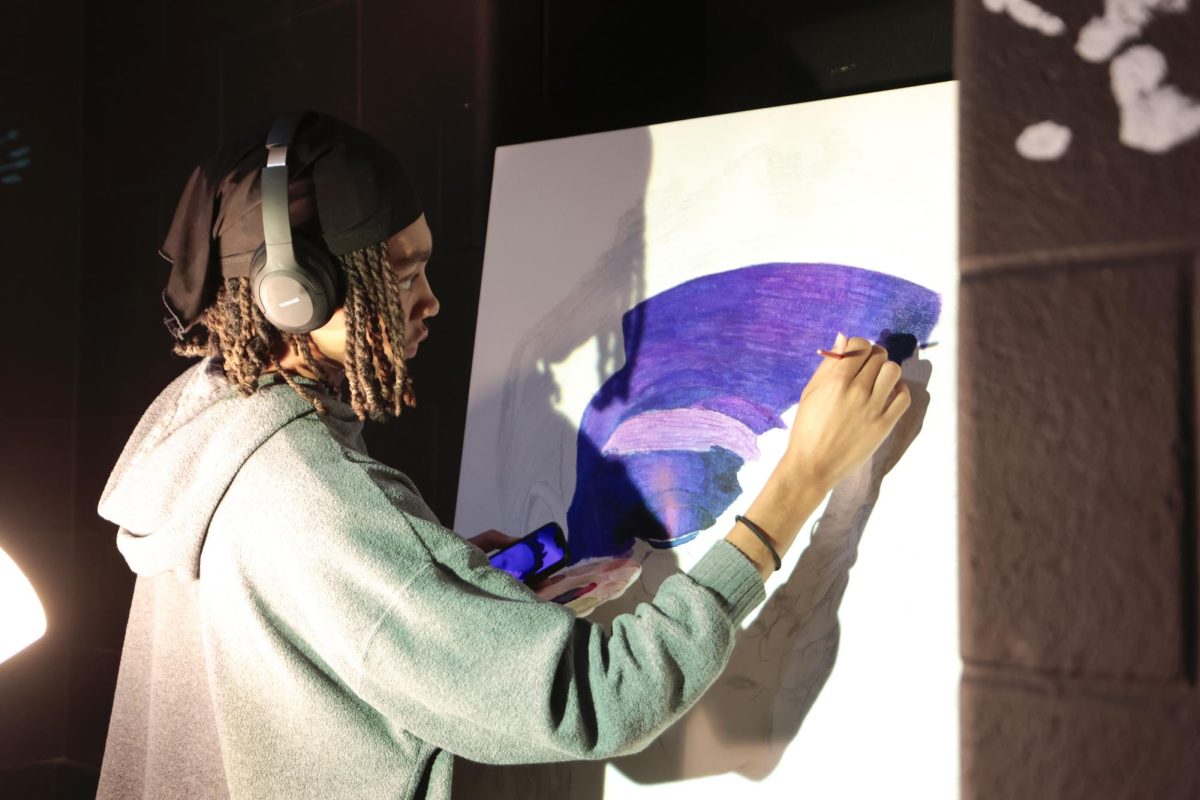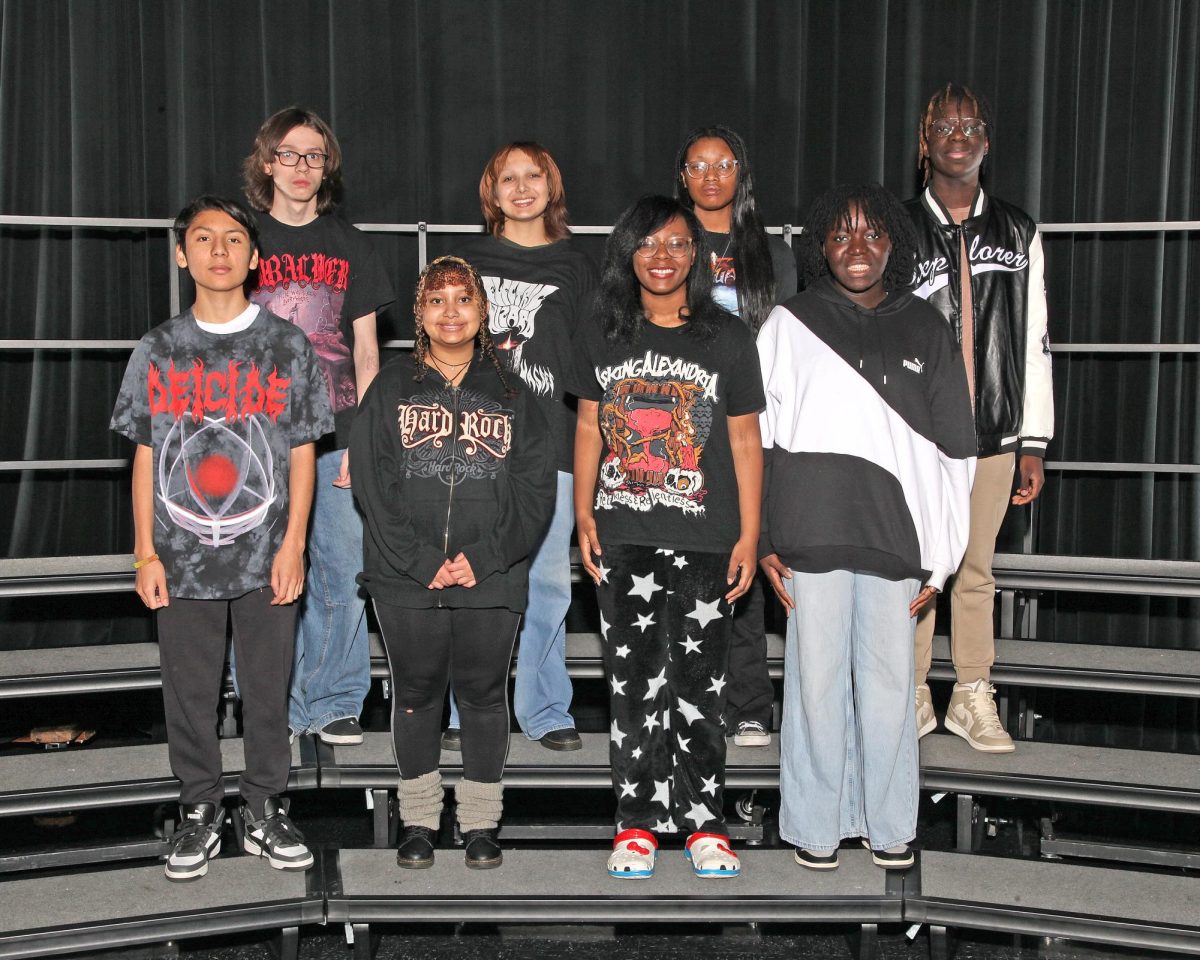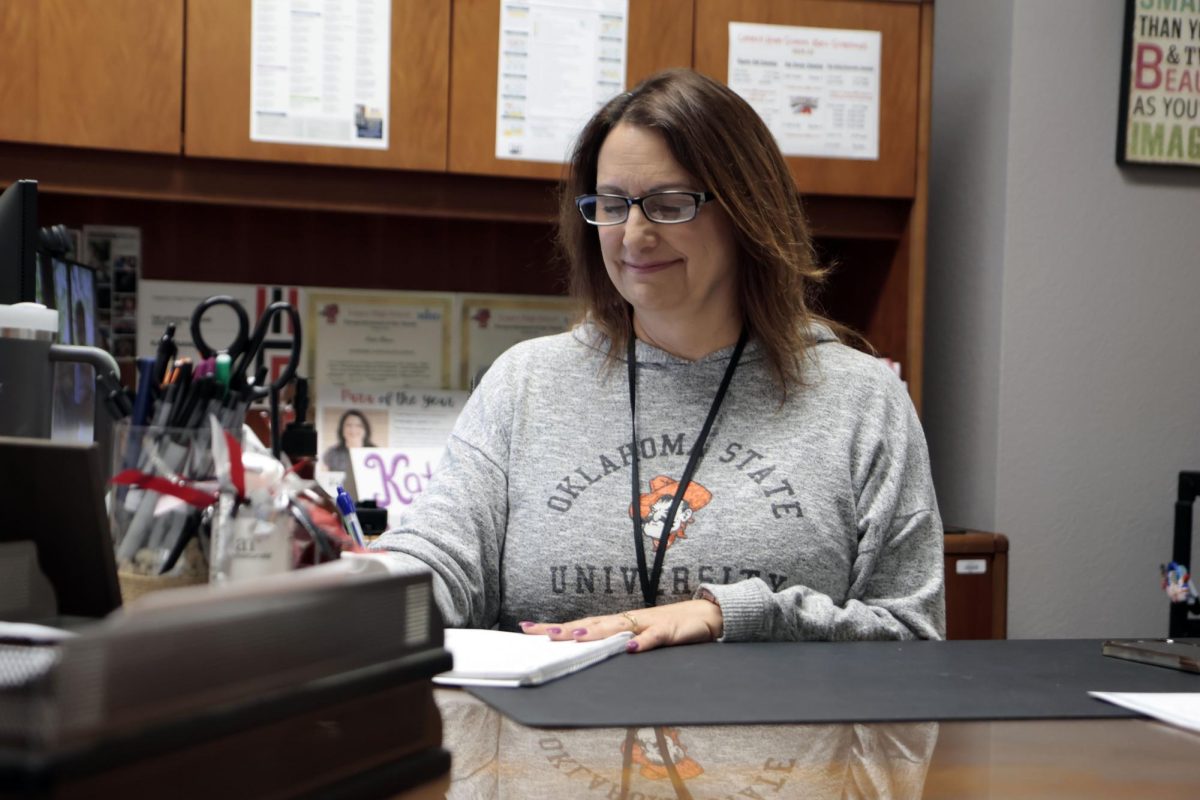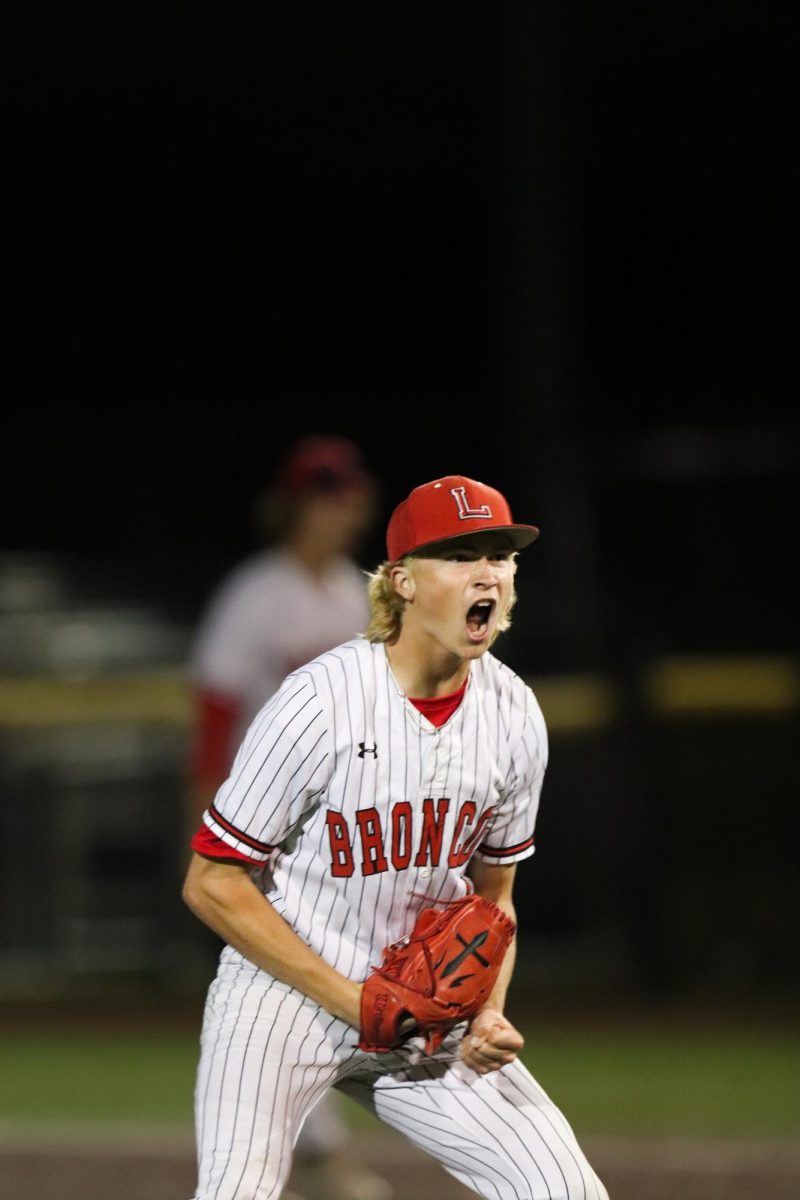Entering his classroom, a student might find themselves confused by bowling balls rolling off of desks, drawings and numerous tales of personal life used to apply to one basic theme of physics. The randomness physics teacher John Davis implements in the everyday physics class helps students more fully understand what they learn through unconventional methods.
Teachers in a wide variety of classes including, but not limited to, art, theater and physics choose to implement different ways of teaching to help get their ideas across to the students. These interactive techniques, such as personal stories, college-level workshops and the occasional Nerf gun help the teachers keep the attention of the students.
“I’ve done a lot of different things and surrounded myself by interesting people,” Mr. Davis said.
Mr. Davis has taught for 16 years and worked with many different high schools teaching physics. He uses lectures and discussion as the basis of his teaching but combines experiments and labs with rockets and bowling balls as well as stories to keep students interested. One lab in particular, the rocket lab in which students built their own basic rocket using an engine and a cardboard body, involved students in something many of them hadn’t done before. Activities like this create a relationship with physics that Mr. Davis wants his students to take away with them from his class.
“My favorite thing in the world is when a student makes connections and really understands the physical reason for something they’ve seen in everyday life,” Mr. Davis said.
Another teacher fond of the project-style learning Mr. Davis tends to use, Jeremy Ferman, teaches theater classes. Mr. Ferman has students perform in scenes with partners and memorize monologues on their own, rather than them learning through a lecture and assignment format. This style allows his students to apply the principles they learn in class in a practical manner on stage.
“It gets them to synthesize and put knowledge to use instead of regurgitating knowledge,” Mr. Ferman said. “I think it allows them to have fun while learning something along the way.”
Mr. Ferman also relates what he teaches to real-life situations, enabling students to understand how they can use what they learn in the future. Although he knows not all of his students concern themselves with pursuing a career in the theater, he remains positive how he teaches enables his students to understand what goes into a production.
“I want them to be the people in the future who buy tickets to see a play instead of going to the movies because they can appreciate the work it takes and the magic that takes place when the lights go down and a real person steps on stage,” Mr. Ferman said.
Art teacher Dave Mason shares these two teachers’ desire to make a change in his students’ thinking. Mr. Mason believes strongly in having more relaxed deadlines for his projects and letting his students have their own take on what to do with the art they make. As long as his ceramics students create art with three dimensions and made out of clay, he believes they should take charge of what exactly they make.
“I try not to book-end anything,” Mr. Mason said. “ If I leave no wiggle-room, it stifles their creativity.”
Mr. Mason accepts not all of his students will make a living off art but keeps his art room more similar to a studio than a classroom. He also allows a lot of room in his curriculum for students to discuss their art with him, where he fosters their ideas and helps them to achieve what they go after. This openness to student input, along with the art pieces and materials decorating every surface of the classroom, helps his students to fully dive into the world of art and work harder.
“Art is messy,” Mr Mason said. “If you aren’t sweating, bleeding or breathing hard, you aren’t doing it right.”



